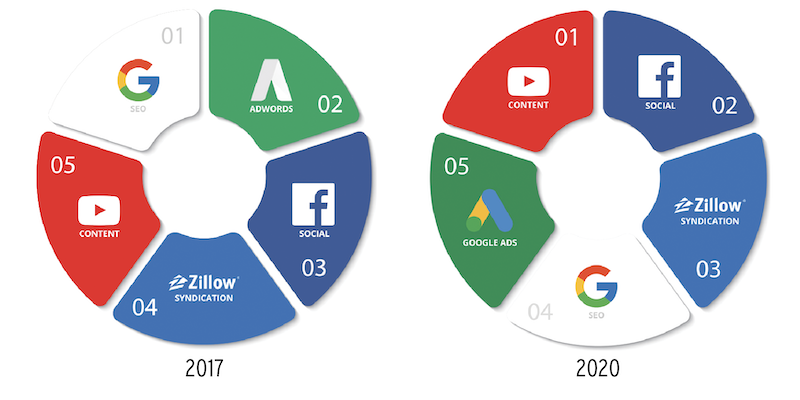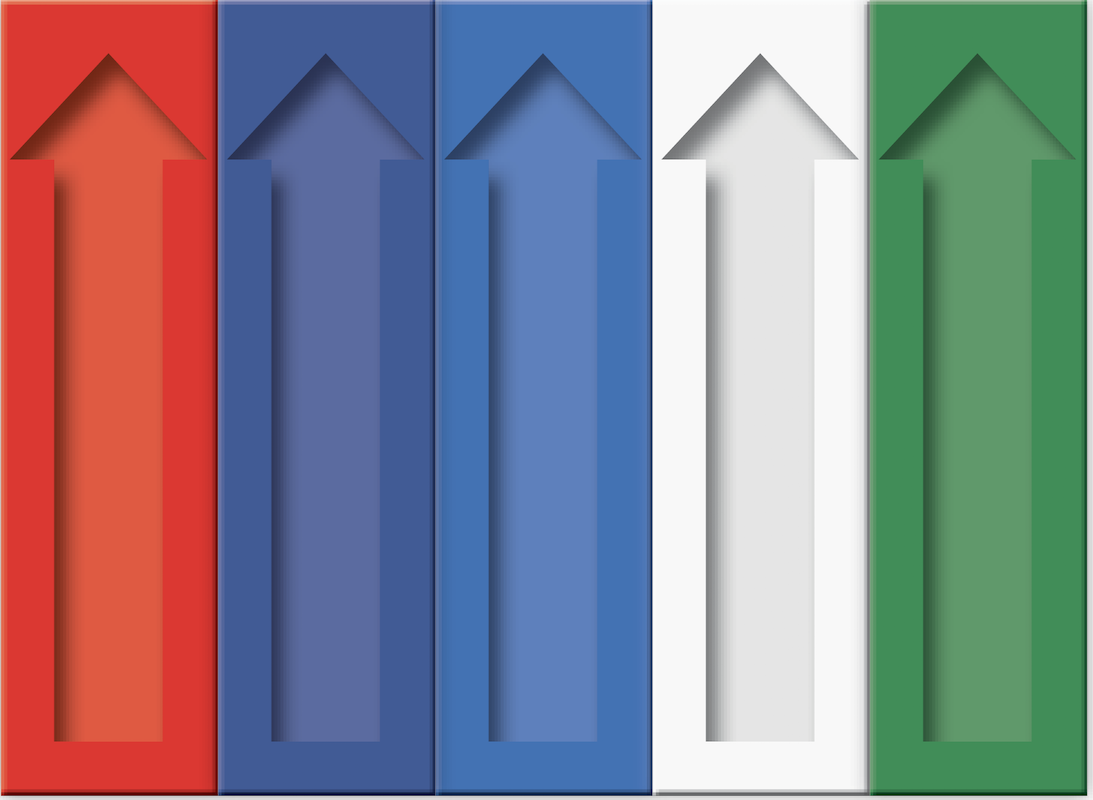The best way to lose market share tomorrow is to ignore data and trends today. The housing industry is in the midst of seismic shifts in both consumer behavior and technological innovation that will, and should, dictate our marketing strategies going forward.
In 2017, I used data from working with our clients to derive my top five marketing strategies for the best return on investment (more quality leads at lower costs). A lot has changed since, and while the marketing channels remain the same, our data indicates their order of importance and effectiveness will be quite different for 2020.
1. Content (up from No. 5 in 2017)
Photography, renderings, videos, podcasts, great copywriting, and so much more are clearly the frontrunners in importance today. The main reason is because content of all kinds is hard to do well consistently and at the breadth and depth demanded by today’s consumer. Getting the attention of home shoppers isn’t difficult at all, but getting them emotionally excited enough to reach out and connect requires amazing content.
Content creation also has a snowball effect by improving the impact of every other part of your marketing strategy. Want to increase your leads from Zillow or lower your cost per click on Facebook? Great content will do both. Content is used at all parts of the buyer journey—awareness, consideration, and decision.
The other critical reason why content has made the leap from No. 5 to No. 1 is that you will need to find professional content partners to help you, which means allocating enough space in your budget to cover the investment needed.
Most marketers suffer from a lack of time and expertise in all content areas, but if you have the money to solve a problem, then you don’t really have a problem.
If you work with your content partners to create an ongoing, repeatable process of creating outstanding content, the other details will fall into place.
2. Facebook and Instagram (up from No. 3)
Without question, social media advertising was the winner of 2019. The combination of a visual medium that allows us to show off the beauty of our homes and communities and Facebook’s wickedly smart artificial intelligence (AI) targeting system left all other media in the dust.
Facebook advertising is up to 75% less in cost per click than search engine marketing or syndication. It can drive an incredibly high number of visitors to your website, and bounce rates and time on site are often 50% better. The reach and frequency you can afford on Facebook also gives it the side benefit of being a legitimate brand-building tool. Your ads are viewed by more people, more often, even if they’re not clicked.
Yes, managing the comments on your social ads can be a challenge, but it also comes with opportunity. The more effectively you engage with your audience, the greater the free social reach. You can also use tools such as Agorapulse to help you create a unified social inbox for your team or auto-hide comments from trolls.

3. Syndication (up from No. 4)
Syndication networks such as Zillow and NewHomeSource.com can feel expensive at face value. However, there are two reasons why it’s never been a better time to make them part of your core strategy.
The first is that since 2017, the term “Zillow” has come to occupy a special place in the coveted home shopper’s brain. “Zillow” is searched for more often on Google than “real estate” or “homes for sale.”
The second is that both of these portals offer exactly what homebuyers want to see: seemingly endless amounts of content related to the largest purchasing decision they will make in their life. Being on your local multiple listing service alone is no longer a viable strategy.
4. Search engine optimization (down from No. 1)
No, I haven’t lost my mind. I understand that search engines are still unbelievably important. But search engine optimization (SEO) is an area where fewer builders are able to realize a reasonable return on investment.
That’s because paying an outside partner to optimize your website’s standing on one or multiple search engines (Google, primarily) without constantly adding new content to your site (see No. 1) isn’t going to result in stellar ROI.
In fact, once that partner fixes any technical or on-page optimization problems with existing content (which shouldn’t take more than a handful of months), you won’t see much additional return from your SEO investment without an ongoing flow of new, high-quality content.
5. Paid search / search engine marketing (down from No. 2)
Buying keywords on Google drove a lot of sales for home builders over the last decade. Its function was similar to a faucet: If you wanted more sales, you simply opened up the tap a bit more (bought more keywords), and if you had what you needed, you could turn it down just as easily.
Real cracks in this strategy began to form in late 2017, and by 2019 it seemed to nearly shatter.
The most interesting reason why paid search has slipped so far down the ROI list is that our smart devices truly know us better than we know ourselves. Today, relying on users to search “new homes Dublin Ohio” to be taken to a home builder’s page showing nothing but new homes in Dublin, Ohio, will (the majority of the time) deliver inferior performance metrics and ROI to having a prospect click on a social media ad served to them by Facebook’s AI system.
Stop and reread those last few sentences before you buy another keyword.
Put another way, paid search historically has been valuable to marketers because it requires consumers to type out what they want in a search bar. But our data shows that customers can’t accurately predict what they want when it comes to a new home, especially early in their journey. Simply, the keywords you buy may not yet be in a homebuyer’s vocabulary.
Another reason why it’s more difficult to see reasonable ROI from paid searches is that the costs, driven up by competition for keywords, have gotten out of hand.
With that, the format of paid search ads—mostly nothing but blue text—doesn’t allow you to effectively differentiate your brand and product from another company’s block of blue text.
Paid search is still integral to any marketer’s strategy, and it's also a healthy part of their budget. However, I recommend buying only the keywords that drive the highest quality traffic to your site.
Paid search is no longer about driving a high volume of traffic; that’s now Facebook’s area of expertise. The majority of the home builders we work with have pulled back their investment in paid search by 20% or more in 2019 and they are seeing an overall jump in ROI because of it.
Don’t be lulled into a false sense of complacency due to the lack of innovation in new marketing channels over the past few years. On the surface, it seems not much has changed, but the effectiveness and importance of the channels we already use has shifted dramatically, and those builders paying attention are picking the pockets of those stuck in neutral with outdated strategies.
Access a PDF of this article in Pro Builder's January 2020 digital edition
RELATED












